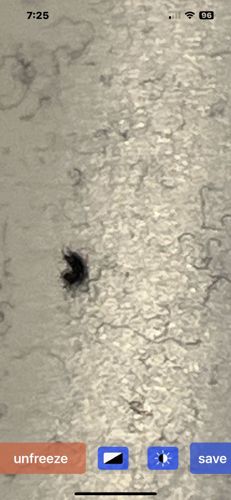Fungus Gnat
Scientific Name: Sciaridae (various genera like Bradysia, Sciara)
Order & Family: Order Diptera, Family Sciaridae
Size: 2-8 mm (adults)

Natural Habitat
Damp, rich organic matter such as potting soil, compost piles, decaying leaves, and areas with high humidity. Often found indoors around houseplants.
Diet & Feeding
Adult fungus gnats typically do not feed or feed on liquids. Larvae feed on fungi, decaying plant matter, and root hairs of plants, especially seedlings and young plants.
Behavior Patterns
Adults are weak, erratic fliers often seen near infested plants or windows. Larvae live in the soil. Their presence often indicates overwatering of plants or high humidity. They have a short life cycle, typically 3-4 weeks, allowing for rapid population growth in favorable conditions.
Risks & Benefits
Risks: Larvae can damage plant roots, especially in young or stressed plants, leading to wilting, yellowing, and stunted growth. They are primarily a nuisance pest indoors. Benefits: In natural environments, they contribute to decomposition of organic matter.
Identified on: 10/1/2025